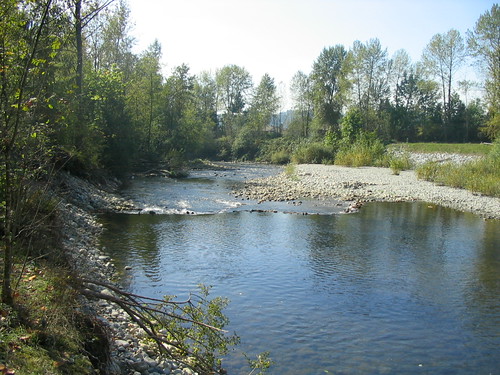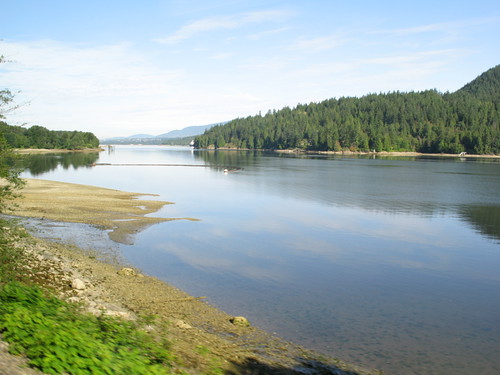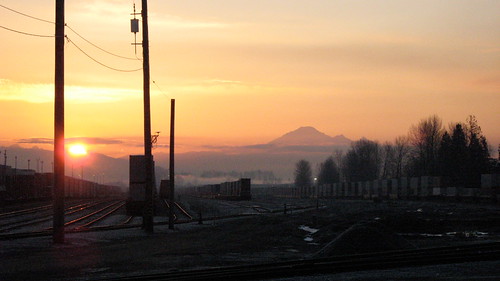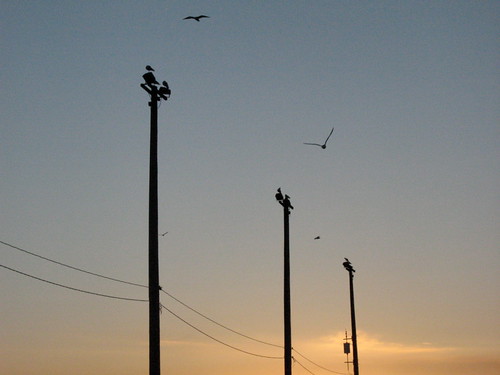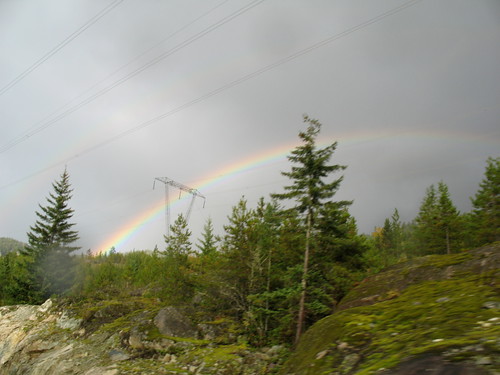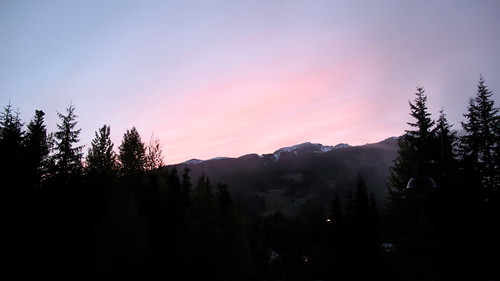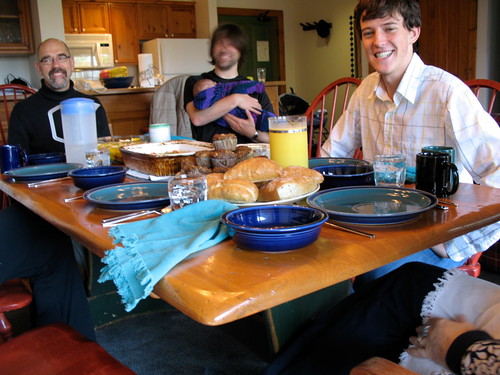I’ve got a new pet.
About a week ago, I noticed a big Orb Weaver spider had settled outside my living room window. It’s a beauty, a bit over 1cm long not counting the legs, with pretty patterns of brown and orange on its abdomen… and the impressive web itself, a couple of feet across, spun in the traditional spiral pattern that gives these beasties their name.
I’ve got a new pet.
About a week ago, I noticed a big Orb Weaver spider had settled outside my living room window. It’s a beauty, a bit over 1cm long not counting the legs, with pretty patterns of brown and orange on its abdomen… and the impressive web itself, a couple of feet across, spun in the traditional spiral pattern that gives these beasties their name.

I never thought I’d call a spider beautiful. Some insects are pretty: ladybugs, dragonflies, butterflies… but spiders? I don’t really have anything against them, but I guess there are too many bad connotations. Poisonous. Related to scorpions. Hallowe’en. Monster movies. This spider isn’t cute or pretty: but it is beautiful and elegant, delicately picking its way across its web—an amazing piece of engineering. No, I can’t be repulsed or afraid, since I’m pretty sure it’s not poisonous. This is a fascinating little living being, simple yet complex.
I’ve watched it take down and rebuild its web at night, a process that takes several hours. First it reabsorbed the radiating support strands one by one, spinning out a new replacement strand as it ate each one, using its rear pair of legs to guide the new webbing in place. The sticky spiral strands were torn down and it ate those too, using its third pair of legs to stuff the collapsed clumps of webbing in its mouth. Smart: its four front legs aren’t flexible enough to reach its head. Unfortunately I had to go to bed, so I missed the rest. A couple of nights before, around 1AM, I came home to find it in the last stages of rebuilding, laying out the spiral webbing from the outside in. And it does this every day, following instincts that evolution has been carving into its ancestors’ genes for tens of millions of years.
The most exciting part came Sunday afternoon. I’d gone to the window to check up on my little friend, when suddenly a fruit fly (I think) flew in the web and got stuck. Immediately the spider rushed in, grabbed the fly and—this is the best part—quickly spun a cocoon around it, twirling the fly around in its mandibles. Just like Shelob and Frodo in Return of the King. Who knew spiders did that in real life? Heh. Then it parked itself back in the centre of its web to suck out the juicy fly insides. Awesome. Just awesome. When I realized what was happening I wanted to get my camera, but the whole thing was over in less than ten seconds. I’d just read about stuff like this, and I wasn’t sure how grossed out I’d be but, really, it was pretty tame. Nothing like the half-chewed mice and baby birds our old cat would leave on the doorstep, back in the day. Interesting factoid: when it’s wrapping up prey, the spider spins out many strands at the same time, whereas when it’s building its web, there’s only one single strand.
I still wonder how much food it’s getting, though. My first thought was that it didn’t seem like a great location (since the web is mostly parallel to my window), but what do I know? Still, can it move, if it finds the pickings too slim? It should, shouldn’t it? That web isn’t like a hive: if it needs to, the spider can just abandon it and walk away… right? I mean, how else did it get here? Or did it fly in as a young on a little webbing parachute? Do Orb Weavers do that? (Not a simple question: that term covers lots of different species). But this one already looks mature… Just how long has it been here, anyways? I’ve suddenly got all these questions because it’s not abstract anymore. There’s so much I don’t know about this little creature, and I do plan to get better informed. Meantime, I feel privileged to have a front-row seat to its life.




